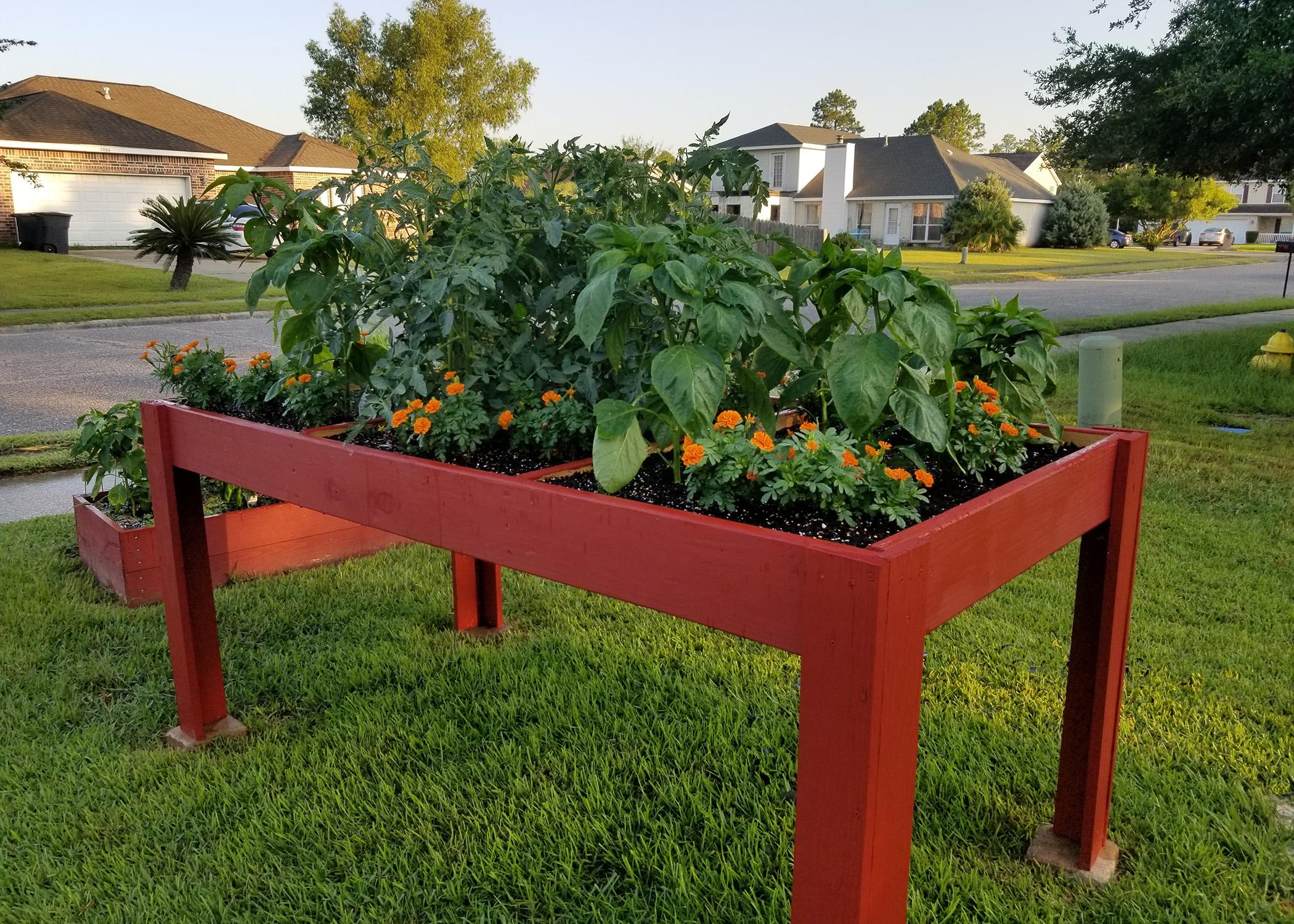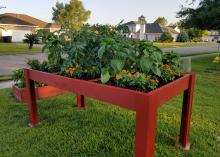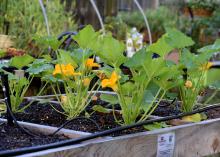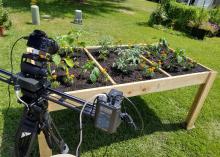Information Possibly Outdated
The information presented on this page was originally released on September 16, 2019. It may not be outdated, but please search our site for more current information. If you plan to quote or reference this information in a publication, please check with the Extension specialist or author before proceeding.
Back-saving salad tables grow vegetables, flowers
Most of my Southern Gardening columns share tips about great ornamental plants that should be grown in all landscapes and gardens in Mississippi and the entire Southeast. But every once in a while, I like to share ideas for being more successful in your home vegetable garden, because who doesn’t enjoy homegrown veggies?
The vegetable garden, when compared to the ornamental landscape, is thought to be more labor-intensive, but it doesn’t have to be. I like to share tips to make the home garden easier and more productive than ever.
One method of growing fresh produce that I found and am totally in love with is salad tables. I even purchased two salad tables as Christmas presents for my wife last year.
To help you build your own salad table, the Mississippi State University Extension Service has produced this step-by-step video
The salad table raises the garden to a level that is easier to work. With my dodgy back, I really appreciate a garden being at waist level. Another advantage salad tables have over the traditional, in-ground garden is they can be located close to the back door -- even on the back porch -- for ready access to the kitchen. You can’t get any fresher than that.
The Pine Belt Master Gardeners started building salad tables, sometimes called kitchen tables, several years ago to help gardeners who have mobility or accessibility issues. This ambitious group of Master Gardeners is closing in on finishing their 900th salad table.
A salad table is basically a shallow frame made from rot-resistant wood. You can use cedar or cypress, but it may not be available from your local lumberyard. I prefer using treated pine, selecting pieces rated for ground contact if possible. This lumber is readily obtainable, cost-effective and not the same as treated lumber from years ago.
The growing mix is an important consideration. I use a 100% peat-based commercial mix. This mix is engineered to have the correct water-holding and air-space characteristic critical for growing success. You could add up to 30% compost, but never use animal manures or native soil. These will add weight and tend to hold too much water.
Easy vegetables to grow this fall and winter in your salad table include, well, salad greens, radishes and kale.
This summer, I was successful growing peppers (bell and jalapeno), zucchini and yellow squash, along with small-stature tomatoes. Other folks have even grown potatoes successfully, not to mention all kinds of flowering plants.
For hard copy plans, see the MSU Extension Publication 2064, “How to Build a Salad Table.”
If for whatever reason, a traditional, in-the-ground garden doesn’t work for you, then consider building your own salad table. It’s a great and easy way to enjoy gardening activities. I’m certainly enjoying mine.





